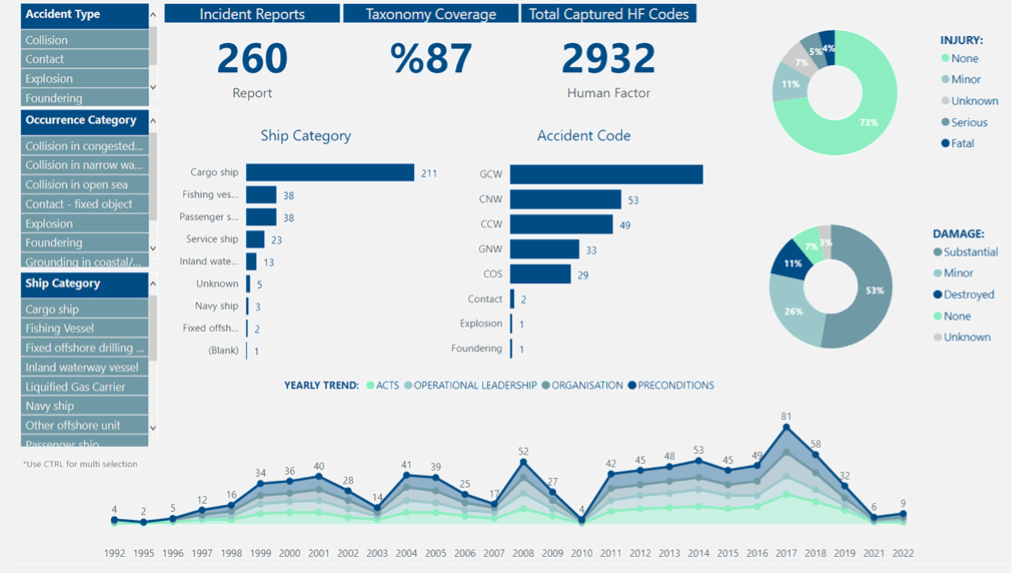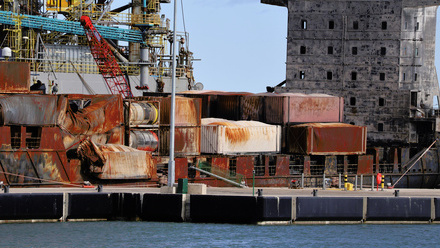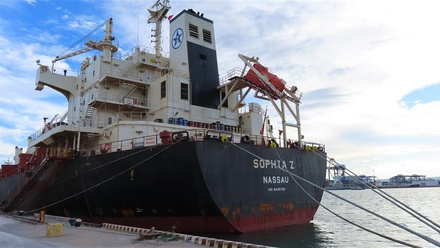Exploring the human factors in shipping accidents
SHIELD database adds depth to traditional incident investigations to ‘uncover underlying systemic issues’.
SHIELD (Safety Human Incident & Error Learning Database) was developed as a core component of the EU-funded SAFEMODE project, which commenced in 2019.
“The project operated with nearly €10 million budget with 35 partners across Europe and beyond,” explains Dr Rafet Emek Kurt, Director of Maritime Human Factors, University of Strathclyde. “Its inception was driven by the recognition of a significant gap in systematically analysing human factors (HF) in safety occurrences within the aviation and maritime sectors.
“Traditional incident investigations often lacked depth in capturing the multifaceted human and organisational contributors to accidents.”
To address this, SHIELD was developed as a comprehensive taxonomy and database, designed to systematically collect, assess, and learn from HF data in safety occurrences. Kurt explains that the taxonomy is structured into four layers: acts (direct actions by human operators leading to safety occurrences), preconditions (factors affecting human performance, such as fatigue or environmental conditions), operational leadership (decisions and policies at the supervisory level influence operations), and organisational influences (broader organisational factors, including culture and resource management).
“This layered approach of the SHIELD tool enables a holistic understanding of incidents, moving beyond surface-level analysis to uncover underlying systemic issues,” explains Kurt.
Benefits include systematic HF analysis (“SHIELD facilitates consistent and comprehensive analysis of human factors across incidents by providing a structured taxonomy,” he notes) and cross-domain applicability (“The taxonomy applies to both aviation and maritime sectors, promoting cross-industry learning and benchmarking,” confirms Kurt).
Enhanced safety management is a further notable boon, with insights from SHIELD informing safety management systems, aiding in the development of targeted interventions and training programmes. Meanwhile, data-driven design feedback sees the database supporting feedback loops to system and operation designers, enabling human-centric design improvements.

Risk and predictions
“SHIELD aids in quantifying human components in safety risk models, enhancing predictive capabilities,” continues Kurt. “As well as this, the intuitive and simple screening function integrated into the SHIELD tool makes identifying HF factors a seamless process. For instance, one shipping company utilised SHIELD to analyse incidents, identifying more than double the human factors compared to previous methods, demonstrating its efficacy in uncovering latent issues.”
The main challenges of SHIELD have been data depth, seamless integration, and user familiarity, which Kurt says are all typical for any new safety analytics platform. Any challenge is actively turned into a strength.
“The effectiveness of SHIELD relies on the availability of detailed and high-quality incident data, which can vary across organisations and regions. We are actively working and collaborating with progressive shipping companies, and P&I (protection and indemnity) clubs to further promote SHIELD,” he explains.
Users require training to effectively apply the taxonomy, ensuring consistent and accurate data entry and analysis.
“The University of Strathclyde's Maritime Human Factors Centre (MHFC) researchers conduct in-house training to ensure fundamental human factors knowledge is created at shipping companies along with the SHIELD implementation,” says Kurt. MHFC also delivers remote, or in-company SHIELD training through hands-on workshops. “We also assign an HF researcher to our users to support any classification and accident investigation issues swiftly.”
SHIELD is campaigning to extend its database and provide meaningful safety learnings to users. “We are calling [for] more shipping companies to use SHIELD and demonstrate that proper human factors learning from accidents and incidents can be achieved,” says Kurt.
A new version of SHIELD is in the pipeline and equipped with AI-driven automatic classification functionalities. “The new version will be integrated with AI tools and provide automatic classifications, evidence-driven advice, and decision support for management,” concludes Kurt. “Continuous refinement based on user feedback will help ensure SHIELD’s long-term impact on proactive safety management.”
Tell us what you think about this article by joining the discussion on IMarEST Connect.
To discover more on this topic, join the Human Element Working Group (HEWG).
Main image: fire damaged cargo ship involved in crash with an oil tanker in the North Sea. Credit: Shutterstock.
Inline image: SHIELD Dashboard. Credit: SHIELD.






